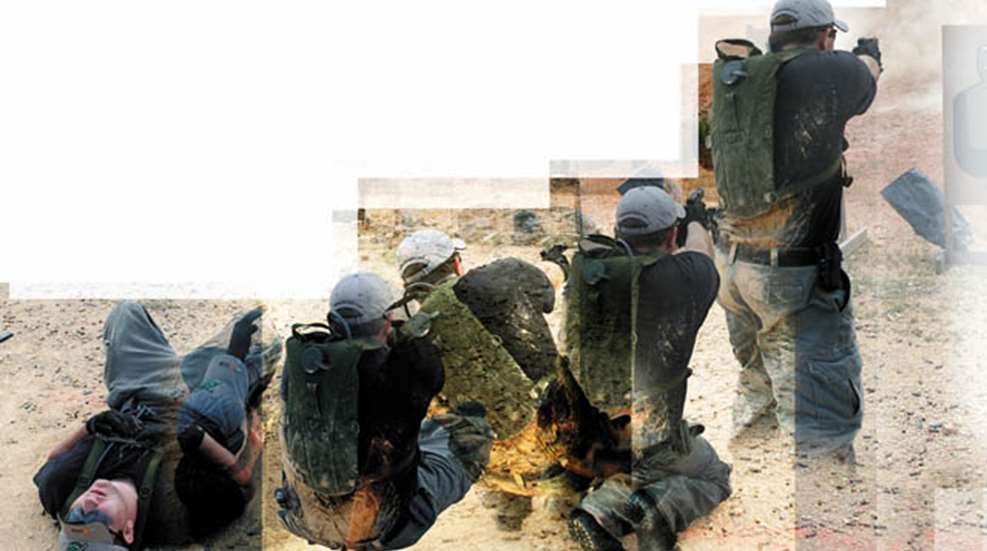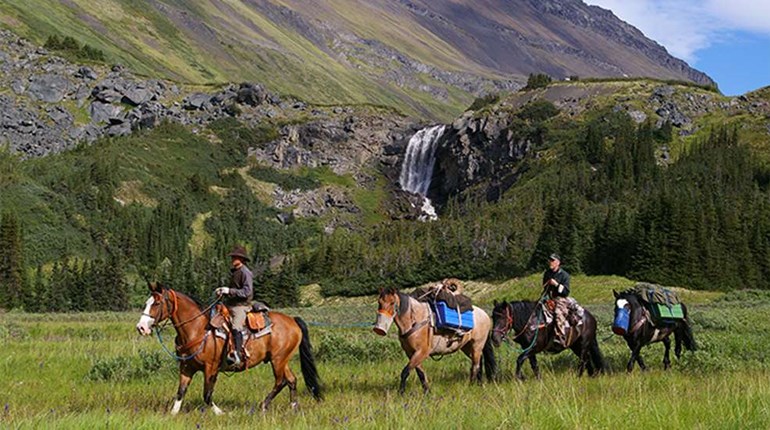
"The root word in 'gunfight' is not gun, it is fight." That one sentence sets the tone for all firearms training at Tactical Response of Camden, TN. All of its material is designed to help shooters achieve victory, should they ever be called upon to defend their lives or those of their families with a firearm. The school's two-day Fighting Pistol course provides invaluable training, including some self-defense techniques that will help you respond should you get caught in a less-than-ideal situation.
Marksmanship is the cornerstone of any type of rifle or pistol training. It is the foundation upon which we build. I recall a firearms instructor at an unnamed school telling me, "We don't teach marksmanship, we teach combat shooting." That's all well and good, but shooting fast without the foundation of solid marksmanship is simply an exercise in noise making and brass generation.
Step number one is to establish a solid marksmanship base—front-sight focus, smooth, deliberate trigger press and follow-through. Unfortunately, many shooters are satisfied with step one. If your goal is to shoot tin cans or paper targets and that's all you ever wish to do with your handgun, then marksmanship is all you need. However, if your desire is to protect the lives of your family, you must go a step beyond the basics and learn the proper response should things not go as planned during a gunfight.
The world is not a square range. You don't get time to warm up and check your gear. When evil creatures choose you as their prey, you must be ready to give it all you've got. Your starting point should be a victorious mindset. Resolve to defeat any challenge put before you and you will defeat any opponent. You will never give in or quit.
Worst Case No. 1: Knocked Down
In general, humans don't like being on the ground—especially on their backs. When I was in the police academy our defensive-tactics instructor admonished us that, "Sooner or later every fight will end up on the ground." With regard to being on the ground, I had another teacher tell me, "The good news is, once you're down there you can't fall any farther."
How does all this apply to armed defenders? It's an imperfect world. Despite your best efforts, you may end up on the ground and on your back. It could be you got caught by surprise and were knocked to the ground by an attacker. Less dramatic, but still feasible, is the chance that in your haste to move to cover you tripped and fell. We all do it.
It's not so important why you are on the ground, but what you do once you are there. You can't call some kind of tactical time-out. There will not be a referee to step between you and your attacker, giving you a chance to get back on your feet. You've got to fight your way back up.
Step one, if your pistol is still holstered you need to find it and get it out without muzzling yourself, roll over, off your holster to ensure you haven't trapped the gun between your body and the ground. Draw the pistol. If you have time to assume a two-handed grip, do so. If not, fight on with one hand.
As for what to do with your feet and legs, armed or not, it's a good technique to bend your knees and pull your feet back. This loads your leg muscles to deliver kicks to your attacker and push him away. Muzzle discipline is paramount from the ground. Your muzzle must clear your knees, legs and feet—if you shoot yourself it still counts.
Remember, you need to fight your way up. When practicing this drill, fire a couple of rounds from your back, then roll up to the sitting position and fire a couple more rounds. Next, move up to the kneeling position and keep fighting. Finally, you'll return to your feet still fighting and engaging the target. Universal safety rules apply—if you're off target, your finger is off the trigger. Never let the muzzle cover anything you are not willing to destroy, and that includes your legs and feet.
Worst Case No. 2: Stoppage

Firearms are simply machines made by the hands of men. The vast majority operate without flaw 99 percent of the time. It's the 1 percent that gets you. Decades ago, when I was a young Marine, an instructor explained to me that I had the rest of my life to fix a certain problem—how long the rest of my life would be was up to me. Airborne troops have a similar saying: In an emergency you have the rest of your life to deploy that reserve parachute.
Consider this: You are forced to fire your handgun to protect your life, the pistol fires once and then fails to fire again. If your pistol has malfunctioned in a fight for your life, you have the rest of your life to fix it. That might be 5 seconds or 50 years. It depends on your mindset and skill level.
If your pistol goes click instead of boom, you most likely have either an empty chamber or a bad round—either way you need to remedy this situation, quick. This action is best ingrained in your neuromuscular pathways through repetitive motion training. During the Fighting Pistol course, a few plastic dummy rounds were mixed into our live-ammo count to help deeply ingrain the procedure for clearing stoppages.
When you handle your pistol, each time you charge it you will seat the magazine firmly with the palm of your support hand and rack the slide forcefully to the rear allowing the full strength of the recoil spring to chamber a round. Never mind using modified or enhanced slide locks or releases. This is the "Tap, Rack" drill that you need to perform over and over again until it's second nature.
It's that simple. If your pistol does not go bang when it is supposed to, tap, rack, reassess. Always reassess to determine if the use of deadly force is still warranted and to ascertain if the target is visible and within range.Never reflexively snap off a round. This same drill is applies to a stovepipe or chamber obstruction.
Worst Case No. 3: Injured Hand

One of the most-notable instances of single-handed shooting saving the day was the 1986 FBI Miami Shootout. Numerous FBI agents were on a rolling stakeout looking for heavily armed bank robbers. They found them. Special Agent Ed Mireles, after receiving a debilitating wound to his left arm early in the attack didn't give up—he stayed in the fight.
Mireles sought cover behind a car and worked his shotgun, a Remington 870 pump, one-handed until it was empty. He then drew his Smith & Wesson service revolver and advanced on the two felons. Firing only with his right hand, Mireles' determination and skill stopped the criminals from escaping or harming anyone else.
Many folks have a tough enough time holding their pistol with two hands, much less one. Competence with the dominant or non-dominant hand takes deliberate practice. Begin by holding the handgun in a firm grip, then punch it out toward the target as if delivering blow with a closed fist. When your arm is extended in this way your hand will be slightly canted inboard—that's OK. Don't waste time trying set the pistol up in perfect vertical position. Focus intently on your front sight. Imagine driving your front sight into the target.
Because shooting with one hand, particularly the weak-hand, is so difficult, it is vital to practice. Most people will only practice what they are good at and skip challenging drills. This is the opposite of correct—especially if you truly hope to improve your skills. Many pistol instructors would suggest breaking your training into thirds, devoting equal amount of practice to strong-, weak- and two-handed shooting.
Parting Thoughts
There is much more to personal defense than owning a firearm. Along those lines, there is more to fighting with handgun than basic marksmanship. However, marksmanship is most definitely the foundation onto which we build our fighting skills.
Physical conflict is adversity. There will be confusion, pain and fear. Things will go wrong when you least expect it, often at the worst possible moment. A deadly attack is the greatest combination of emotional and physical stress you will ever endure, except perhaps your wedding day.
God has blessed you with adrenaline. It will mask a lot of pain and give you strength in your large-muscle groups. Conversely, your coordination and fine-motor skills will diminish greatly when it kicks in. Your sense of time and space will fog.
One maxim ingrained in students who attend a Tactical Response class is you will not simply default to your training. In a life-or-death crisis, you will default to the level of training you have mastered.
Regardless of how many times you practiced or how proficient you became at a certain drill or technique, physical skills—and that includes fighting with a gun— are perishable. Learning the skill correctly and investing the time it takes to maintain that skill should be a top priority in your self-defense planning. If the last time you fired a pistol was in the Army in 1985, I'd venture to say your weapon-handling skills are a bit rusty.
Learning to fight with a handgun is like purchasing life assurance. Life insurance only kicks in when you are dead. Life assurance, on the other hand, is useful while you are still above ground.






































